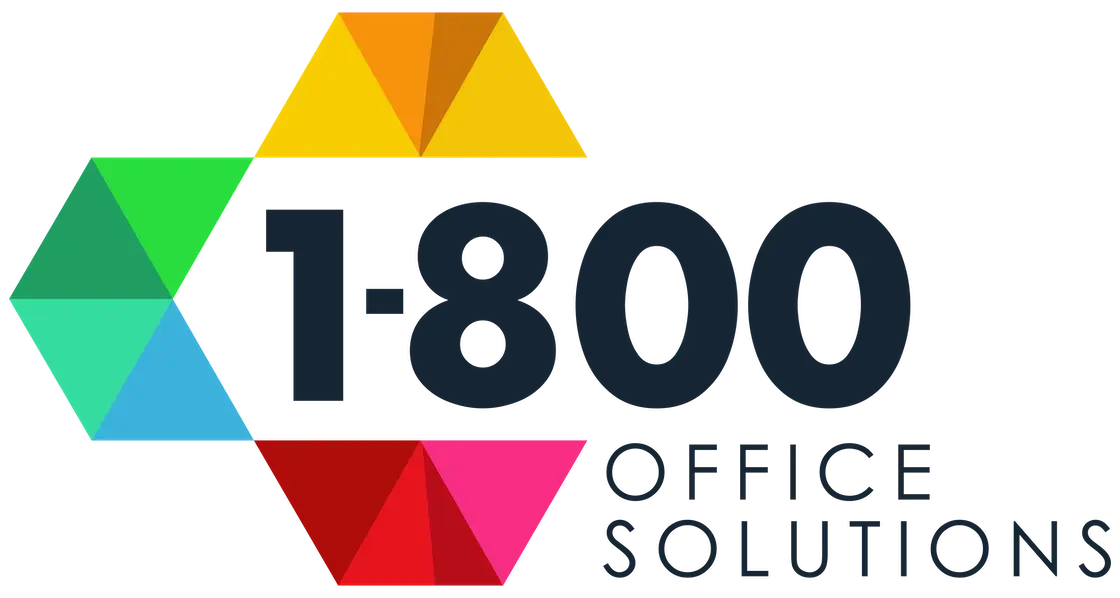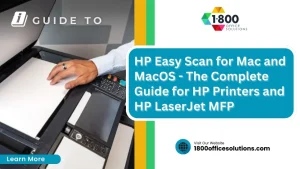Maximizing Efficiency: The Role of Monitoring and Reporting in Managed Print Services
Are inefficient printing processes draining your business resources? Monitoring and reporting are essential elements of managed print services that can significantly improve your workflow and reduce the total cost of ownership. This article will explore the benefits of effective monitoring in print management, how reports can optimize your printing operations, and the advanced tools available to streamline your processes. Readers will learn practical strategies to minimize toner waste and evaluate their carbon footprint, ultimately enhancing operational efficiency and reducing unnecessary expenses.
Understanding the Impact of Monitoring and Reporting in Managed Print Services

Managed Print Services (MPS) aim to optimize printing operations while reducing costs and waste. Monitoring plays a crucial role in enhancing efficiency by providing insights into asset performance and supply chain needs. Additionally, comprehensive reporting enables informed decision-making, allowing businesses to align print services with their strategic objectives and drive automation within their workflows.
Defining Managed Print Services and Their Goals
Managed Print Services (MPS) encompass a strategic approach to managing a company’s printing needs efficiently. The goals of MPS include reducing operational costs, optimizing inventory for copiers and printers, and ensuring adequate supplies of ink. By leveraging analytics, businesses can identify usage patterns and streamline workflows, ultimately enhancing productivity while minimizing the burden on help desk support for common printing issues.
The Connection Between Monitoring and Efficiency
Monitoring is integral to effective fleet management within Managed Print Services. By closely tracking equipment usage and performance, businesses can identify inefficiencies and prevent downtime, which directly impacts customer service. Additionally, real-time data from monitoring aids in optimizing procurement processes, ensuring that supplies are aligned with actual demand, thus enhancing overall print management and operational efficiency.
How Reporting Drives Better Decision-Making
Reporting within Managed Print Services plays a pivotal role in enhancing decision-making processes. By utilizing device monitoring data, businesses can analyze usage patterns and identify inefficiencies in their print fleet, allowing for informed adjustments to improve overall performance. Moreover, integrating insights from a robust document management system can further reinforce data security and streamline the IT infrastructure, ensuring that resources are optimally allocated according to the unique needs of the organization.
Aligning Monitoring Efforts With Business Objectives
Aligning monitoring efforts with an organization’s business objectives is essential for maximizing efficiency in Managed Print Services. By integrating digital solutions with existing infrastructure, businesses can ensure that their print management strategies support overall goals while enhancing uptime and productivity for end users. This strategic alignment allows organizations to identify key performance metrics, enabling them to make informed decisions that drive operational improvements and better resource allocation.
Benefits of Effective Monitoring in Print Management

Benefits of Effective Monitoring in Print Management
Effective monitoring in Managed Print Services (MPS) offers several key benefits. Proactively identifying and resolving issues ensures minimal disruption, while continuous oversight enhances security measures against data breaches. Monitoring usage patterns can lead to cost reductions, especially concerning ink cartridge consumption. Additionally, accurate data supports sustainability efforts by optimizing resource use, aligning with digital transformation goals.
Proactively Identifying and Resolving Issues
Proactively identifying and resolving issues within Managed Print Services can significantly reduce operational expenses and enhance overall efficiency. For instance, utilizing monitoring solutions can alert businesses to low ink levels in Konica Minolta devices before they lead to unplanned downtime. By integrating cloud print services with strong asset management practices, organizations can streamline invoice processing and ensure that all equipment operates optimally, thus minimizing disruptions and supporting a smoother workflow.
Enhancing Security Through Continuous Oversight
Continuous oversight in Managed Print Services enhances security by proactively identifying vulnerabilities and mitigating risks. By integrating cloud computing solutions, companies can monitor print activities in real-time, ensuring that sensitive data remains protected from unauthorized access. This level of monitoring not only improves overall efficiency but also reduces waste by optimizing resource use, helping organizations maintain compliance and protect customer information while outsourcing print services effectively.
Reducing Costs by Monitoring Usage Patterns
Monitoring usage patterns allows businesses to reduce costs within their managed print services by enabling precise data collection about equipment performance and resource consumption. This data-driven approach supports sustainability initiatives by identifying overuse or wasteful practices, which can then be addressed to optimize supply usage. By leveraging digitization, organizations can develop targeted strategies to enhance their printing operations, ultimately leading to lower operational expenses and a more efficient print environment.
Improving Sustainability With Accurate Data
Improving sustainability within Managed Print Services (MPS) is greatly enhanced through accurate data analysis. By closely monitoring fleet performance, organizations can identify excessive printing habits and reduce waste, contributing to eco-friendly practices. This data-driven approach not only boosts productivity but also aligns with corporate responsibility goals, allowing businesses to make informed decisions that positively impact the environment. For tailored solutions to maximize efficiency in your organization,
Leveraging Reports to Optimize Printing Operations

Leveraging reports in Managed Print Services enables organizations to analyze data for performance improvements and identify waste, facilitating targeted reductions. Customizing reports to meet stakeholder needs ensures relevant insights, while tracking progress over time highlights the effectiveness of implemented strategies. These practices collectively enhance operational efficiency and contribute to informed decision-making in print management.
Analyzing Data for Performance Improvements
Analyzing data within Managed Print Services is crucial for enhancing overall performance and efficiency. By examining metrics such as print volume, ink usage, and device uptime, organizations can identify trends and inefficiencies that may otherwise go unnoticed. For example, if a specific printer consistently runs out of toner faster than others, this may indicate a need for supply adjustments or even re-evaluation of user practices, ultimately leading to more streamlined operations and reduced costs.
Identifying Waste and Implementing Reductions
Identifying waste within Managed Print Services is essential for optimizing printing operations and reducing costs. By analyzing reporting data, organizations can pinpoint recurring issues, such as overprinting or excessive use of color when black-and-white would suffice. For instance, if a specific department consistently exceeds its print quotas, management can implement targeted training or adjust printing permissions to prevent further waste, ultimately enhancing overall efficiency and aligning with sustainability initiatives.
Customizing Reports for Stakeholder Needs
Customizing reports for stakeholder needs is essential in optimizing printing operations within Managed Print Services. By tailoring these reports to specific departments or roles, organizations can provide relevant insights that facilitate informed decision-making. For example, finance teams may benefit from cost breakdowns per department, while IT personnel require data on device performance and usage patterns to enhance management efficiency.
Tracking Progress Over Time
Tracking progress over time is crucial for organizations utilizing Managed Print Services (MPS) to ensure continuous improvement and operational efficiency. By regularly reviewing performance metrics, businesses can identify trends in printing usage and resource consumption, allowing them to make informed adjustments as needed. For example, if print volume diminishes in a particular department, it may signal the opportunity to streamline supplies or reconsider equipment allocation, ultimately enhancing productivity and reducing costs.
Implementing Advanced Monitoring Tools and Technologies

Choosing the right software is crucial for effective monitoring in Managed Print Services, enabling organizations to track performance accurately. Integrating these monitoring solutions with existing systems ensures seamless operation. Training teams to effectively use these tools maximizes their potential. Additionally, staying updated with technological advancements helps businesses adapt and optimize their print management strategies continually.
Choosing the Right Software for Your Organization
Choosing the right software for Managed Print Services is essential for organizations seeking to maximize efficiency. It is important to select solutions that offer real-time monitoring capabilities and detailed reporting features, enabling businesses to track printer performance and identify inefficiencies promptly. For instance, a company may benefit from software that integrates with existing IT systems, providing seamless visibility and control over print operations, which ultimately helps in reducing costs and enhancing overall productivity.
Integrating Monitoring Solutions With Existing Systems
Integrating monitoring solutions with existing systems is crucial for organizations looking to enhance their Managed Print Services. By ensuring compatibility between new monitoring tools and legacy systems, businesses can achieve seamless data flow and comprehensive insights into their print operations. This integration enables real-time tracking of printer performance and resource utilization, ultimately allowing organizations to identify inefficiencies more effectively and make informed decisions that drive operational improvements.
Training Teams to Use Monitoring Tools Effectively
Training teams to use monitoring tools effectively is crucial for maximizing the benefits of Managed Print Services (MPS). By providing targeted instruction on software capabilities and best practices, organizations can ensure staff members understand how to interpret data and respond to alerts, significantly improving print management efficiency. For example, a company that invests in comprehensive training programs often sees reductions in equipment downtime and operational costs, as employees are better equipped to identify and resolve issues before they escalate.
Staying Updated With Technological Advancements
Staying updated with technological advancements is crucial for organizations seeking to optimize their Managed Print Services (MPS). By regularly evaluating new software and tools, businesses can enhance their monitoring capabilities and improve overall print management efficiency. For example, adopting cloud-based monitoring solutions allows for real-time insights into equipment performance, enabling quicker response times to issues and reducing operational disruptions.
Best Practices for Maximizing Efficiency Through Monitoring

Best Practices for Maximizing Efficiency Through Monitoring
Setting clear metrics and key performance indicators is essential for effective monitoring in Managed Print Services. Regularly reviewing and adjusting strategies helps businesses stay agile and responsive. Collaborating with providers fosters enhanced support, while ensuring compliance with industry standards reinforces operational integrity. These practices collectively empower organizations to optimize their print management processes, driving efficiency and reducing costs.
Setting Clear Metrics and Key Performance Indicators
Setting clear metrics and key performance indicators (KPIs) is essential for effective monitoring in Managed Print Services (MPS). These metrics provide measurable insights into printer performance, usage trends, and cost-effectiveness, enabling organizations to identify areas for improvement. For instance, tracking the frequency of printer usage across departments helps pinpoint excessive consumption and supports targeted interventions to optimize resource allocation.
Regularly Reviewing and Adjusting Strategies
Regularly reviewing and adjusting strategies is vital for enhancing efficiency in Managed Print Services. Organizations can identify trends and changes in usage patterns through consistent evaluation of performance metrics, allowing them to make necessary adjustments to their printing practices. For example, if a department consistently exceeds its print quota, management can implement specific training or adjust permissions to curb overuse, ultimately leading to more sustainable operations and lower costs.
Collaborating With Providers for Enhanced Support
Collaborating with providers for enhanced support is essential in maximizing efficiency within Managed Print Services. By leveraging the expertise of service providers, businesses can gain valuable insights into best practices and tailored solutions that meet their specific needs. Regular communication and proactive engagement ensure that organizations remain informed about the latest technologies and strategies to optimize print management, ultimately leading to improved performance and reduced costs.
Ensuring Compliance With Industry Standards
Ensuring compliance with industry standards is a critical aspect of maximizing efficiency in Managed Print Services (MPS). Organizations should regularly assess their print management practices against established standards to guarantee that their operations meet regulatory requirements and maintain data security. For example, adhering to standards such as ISO 27001 can help businesses protect sensitive information while optimizing their printing processes, thereby enhancing overall operational integrity and reducing the risk of costly compliance violations.
Success Stories: Achieving Efficiency With Managed Print Services

This section will explore success stories highlighting the effectiveness of Managed Print Services (MPS) in enhancing operational efficiency. The case study focuses on a corporate environment that successfully reduced costs through strategic monitoring and reporting. Additionally, real-life examples will demonstrate streamlined operations and reveal lessons learned from leading organizations, showcasing strategies that delivered measurable results.
Case Study: Reducing Costs in a Corporate Environment
A leading corporation implemented Managed Print Services (MPS) and achieved significant cost reductions through strategic monitoring and reporting. By analyzing equipment usage and identifying underperforming devices, the organization was able to consolidate its print fleet, resulting in lower maintenance expenses and improved resource allocation. This proactive approach not only streamlined operations but also enhanced overall productivity by ensuring that the right devices were available to meet the workforce’s demands.
Real-Life Examples of Streamlined Operations
A notable example of streamlined operations through Managed Print Services (MPS) can be seen in a large financial institution that implemented a centralized monitoring system. By analyzing print volume across various departments, the organization identified excessive usage in certain areas and took corrective measures, such as reallocating resources and optimizing device placements. This data-driven approach not only reduced print costs by 30% but also improved overall productivity, demonstrating how effective monitoring and reporting in MPS can lead to significant operational efficiencies.
Lessons Learned From Leading Organizations
Leading organizations have demonstrated that robust monitoring and reporting systems in Managed Print Services (MPS) are essential for achieving operational efficiency. By analyzing data on usage patterns and costs, these companies have been able to make informed adjustments, significantly reducing printing expenses and minimizing waste. Practical insights from these case studies reveal that proactive management not only enhances resource allocation but also promotes sustainability initiatives, ultimately benefiting both the bottom line and the organization’s environmental goals.
Strategies That Delivered Measurable Results
Organizations have achieved measurable results by implementing targeted strategies focused on monitoring and reporting within Managed Print Services. For instance, one company employed data analytics to identify common printing habits among its employees, allowing them to adjust policies that encouraged double-sided printing and reduced unnecessary color printing. This strategic approach not only cut costs significantly but also led to a measurable decrease in their environmental footprint, demonstrating how data-driven decisions can enhance efficiency and support sustainability efforts.
Conclusion
Maximizing efficiency through effective monitoring and reporting in Managed Print Services is crucial for businesses aiming to reduce costs and improve productivity. Organizations can identify inefficiencies, enhance security, and drive sustainability efforts by leveraging data-driven insights. Proactive management not only streamlines operations but also aligns print management strategies with overarching business goals. Implementing these practices empowers businesses to make informed decisions that lead to long-term improvements and a stronger competitive edge.











